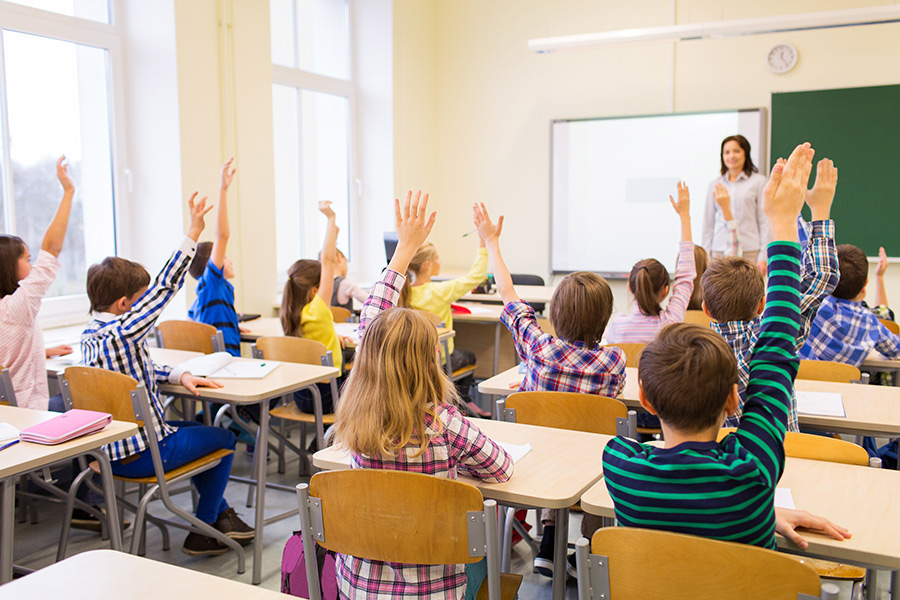Inclusion at a crossroads: Special education in Ireland
Special education in Ireland has changed dramatically in recent years, as policymakers and educators have sought to improve learning for students with additional learning needs and/or disabilities. Following Ireland’s ratification of the UN Convention on the Rights of Persons with Disabilities (UNCRPD), inclusive education experts Joanne Banks and Michael Shevlin of Trinity College, Dublin, argue that inclusion is at a crossroads. Ireland currently has a hybrid model, with pupils educated in mainstream classes, special classes in mainstream schools, or special schools. However, the UNCRDP obliges policymakers to avoid segregation and educate all pupils together, in mainstream classes.
The United Nations Convention on the Rights of Persons with Disabilities (UNCRPD) was the first human rights treaty this century. Adopted in 2006, it aimed to change attitudes and approaches to disability, demanding that signatory countries recognise ‘the inherent dignity and worth and the equal and inalienable rights of all members of the human family as the foundation of freedom, justice and peace in the world’.
The UNCRPD includes the right to education for all ‘those who have long-term physical, mental, intellectual or sensory impairments which in interaction with various barriers may hinder their full and effective participation in society on an equal basis with others’. The convention specifically obliges states to ensure that students with additional learning needs and/or disabilities can access an inclusive, quality, and free education at all levels, and on an equal basis with others in the communities in which they live.

The UNCRPD has therefore widened the evolving and ongoing international debate about how students with disabilities and/or additional learning needs should best be educated, not least what is understood by ‘inclusive education’. Many countries have developed education policies which aim to create more inclusive school environments. However, few would currently comply with the UNCRPD’s definition on segregation given the ongoing education of students with additional learning needs and/or disabilities in special classes or special schools.
Ireland, for example, ratified the UNCRPD in 2018. The country’s existing structure of provision for students with additional learning needs and/or disabilities allows students to be educated in mainstream schools, in special classes within mainstream schools, or in special schools. As the UN has made it clear that parallel systems are not compatible with its view of inclusion, academics and policymakers alike argue that inclusive education in Ireland is at a crossroads.
There have been increases in the number of students with special educational needs attending mainstream schools, as well as the number of special classes.
Respected experts in the field, Dr Joanne Banks and Professor Michael Shevlin of Trinity College, Dublin, believe that Ireland’s ratification of the UNCRPD is the most significant external influence yet exerted on the development of special education policy.

Evolution
Special education in Ireland has undergone dramatic changes over the last 30 years. As well as changes to funding models and a rise in the number of special education teaching posts, there have been increases in the number of students with additional learning needs and/or disabilities attending mainstream schools, as well as the number of special classes in mainstream schools. The number of special schools has also grown.
As a result, between 2011 and 2019 government expenditure on special education increased by 46%, and special education as a percentage of the total education budget increased by 13%, with €1.9 billion allocated to special education in 2019. In the same period, the number of additional teaching posts for special education increased by 46% and the provision of special classes by 196%. The number of students enrolled in special classes also increased by 155% and the number of students enrolled in special schools increased by 15%. It is now estimated that over a quarter of all students in Ireland’s mainstream schools have additional learning needs and/or disabilities.
International research
Banks and Shevlin explore Ireland’s continued operation of a parallel system of special schools and special classes for students with additional learning needs and/or disabilities in a recent paper published in Education Sciences. They find that, despite significant funding increases, challenges persist in achieving a more inclusive school system compatible with the UNCRPD. A major issue is that there has been rapid expansion of the special class model, but only limited investigation of its efficacy. While recognising that comparing research from different countries is hampered by differences in language definitions, terminology and methodology, Banks and Shevlin’s research looks at what has been happening internationally as well as in Ireland, as other countries also struggle to meet the UNCRPD’s definition of inclusion.

Some countries argue that ‘education for all’ policies do not mean that all students have to be educated together in mainstream classes. For example, in some countries students may be placed in special classes for a short time, as an intervention. Other countries have more permanent settings, but children may attend special classes for just part of the day. One state that has pioneered fully inclusive education is New Brunswick in Canada. Here the province has legislated for – and developed best practice in – the inclusion of all students in mainstream classes, including socially disadvantaged and First Nation pupils, as well as those with additional learning needs and/or disabilities.
Banks and Shevlin find that, despite the fact that special class provision for students with additional learning needs and/or disabilities is the norm in 18 out of 23 countries studied, there is little evidence to suggest that students benefit from such placements. Some argue that students with disabilities in mainstream classes are more likely to achieve better academic results and qualifications than those in special class settings and that they are also more likely to develop the social skills which will be valuable to them in later life. Others argue that students with disabilities in special classes benefit from having small class sizes, specially trained teachers, individual attention, and an emphasis on teaching functional skills.
Special classes in Ireland
Banks and Shevlin note how special classes in Ireland have grown significantly since the late 2000s. Between 100 and 200 new special classes are opening every year, such that in 2019/20 more than 700 classes were in operation. The increase in provision has led to government concern about cost, with the annual cost per student increasing by 11% between 2012 and 2019.

In additional research, Banks has explored Ireland’s evolving funding model for students with additional learning needs and/or disabilities. She finds that the way education systems are financed directly affects the extent to which schools can be inclusive. Banks also argues that the current dual funding streams for general and special education represent an outdated medical model of disability ‘whereby students with disabilities receive supports to integrate into an unreconstructed mainstream education system’.
There has been rapid expansion of the special class model, but only limited investigation of its efficacy.
Another significant change since the late 2000s has been that, whereas special classes were previously primarily aimed at students with general learning difficulties, 85% of special classes are now designated for students with Autism Spectrum Disorder (ASD). Though the data is limited, what data there is suggests that autism has a prevalence rate of 1.5% in schoolchildren in Ireland compared to other disabilities. Banks and Shevlin suggest that the increase in special classes designated for students with ASD has been, to some extent, influenced by parents and advocacy groups which has attracted media and political attention to the challenges that students with autism face in education.
Ireland’s National Council for Special Education (NCSE) recently produced a report on the country’s progress on inclusion following ratification of the UNCRPD. The NCSE wanted to review whether special classes should continue to be offered as part of the continuum of special education for students with additional learning needs and/or disabilities, or whether all students should be taught together in mainstream classes. The report documents opposing views. Those in favour of special classes argue that they are financially efficient and facilitate specialist teaching and therapeutic inputs. Those against say that students in special settings remain there for the whole of their education and that settings are often away from students’ home communities, necessitating significant travel. In addition, they argue that many special school buildings are deficient and not suited to therapeutic interventions, and that students in special schools present high levels of challenging behaviour.

At a crossroads
Banks and Shevlin argue that Ireland’s education system and the principle of inclusion are at a crossroads. Despite the dramatic changes that have taken place to make special education more inclusive, ratification of the UNCPRD has prompted ‘a radical rethink by policymakers’.
Banks and Shevlin conclude: ‘The retention of special schools and special settings is based on a number of assumptions that have rarely been challenged to produce compelling evidence to justify their existence. It is assumed that special schools and special settings are better resourced and capable of delivering better quality academic and social outcomes. However, both internationally and nationally there is very little evidence that attendance at special schools produces better quality academic and social outcomes for their students.’
Personal Response
What is the most significant barrier Ireland has to overcome if it is to realise the UNCRPD’s vision of inclusive education?
In Ireland, we have many system and school-level factors to consider as we move towards inclusive education. Our biggest barrier, however, can be our attitudes and assumptions around students who are perceived as different from a non-existent ‘norm’. It is time now, to ask the difficult questions around why some students are marginalised by our education system and what we plan to do about that going forward.